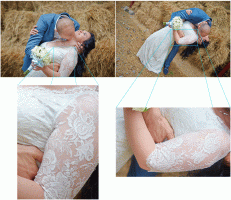GMCPhotographics
Canon Rumors Premium
privatebydesign said:Eldar said:+1eml58 said:privatebydesign said:I did, I used two 14mm L's, both were a huge disappointment, I ended up getting the TS-E 17 and couldn't be happier, it is in a league all its own for landscape work, considerably better than either the 14 or 16-35. A two stitch 17 image using shift gives you an 11mm fov.
Completely agree with this.
I own the 14f/2.8 II & 16-35f/2.8 II, plus the Zeiss 15f/2.8, I think the Zeiss (Although Manual Focus) is ahead of the Canon 14 & 16-35 in IQ, The 17TSE II is just an amazing Lens (Also Manual Focus)
I had the 14 and sold it. I have kept the 16-35 II, but I hardly ever use it. Last week I bought the 17 TS-E and played with it over the weekend. What a lens!! I have not looked at the filter solutions yet, but it seems there are alternatives that´s working.
Eldar, like eml58 I recently got the Fotodiox Wonderpana. It is very well made and the perfect solution for round filter use, I only got the CPL as that was all I really missed. The complimentary additional 66 "ears" for grad filter use are not a good design, you can't rotate them on the Wonderpana so have limited functionality. BUT Fotodiox just, within the last couple of days, announced a rotation monut for the 66 ears, if you need grad filter use I'd hold off until they also bring those to market for the 17, at the moment they only make them for the Nikon 14-24.
The big advantage of the Wonderpana over the much touted Lee system and home made work arounds is the Wonderpana allows full movements without vignetting.
I used to use lee grad filters heavily. My thoughts were, if Digital has a simular DR to slide, then slide methodologies were the way forward. I had hard, medium and soft grads, plus most of the stripe set and coloured grads. Then I learnt that I could use solid ND's to take two shots, one exposed for the sky and one exposed for the foreground. On a tripod naturally, with no movment between shots. I could decouple the need to shoot everything in one frame and then combine them in Photoshop later using layers and a soft brush. It totally revolutionised my landscape work and now I can shoot with less gear and better results. If I need a curved ND grad or a wobbly line grad....it's just a matter of post prod. Generally, it's a better technique and takes a lot less time over all to get great results.
I sold all my Lee gear (for a profit!) and bought a 16-35IIL out of the cash I accumulated. A double win in my books.
When I sourced potential filters for the TS-e 17L, a polariser and ND filters were my priority.
Upvote
0







